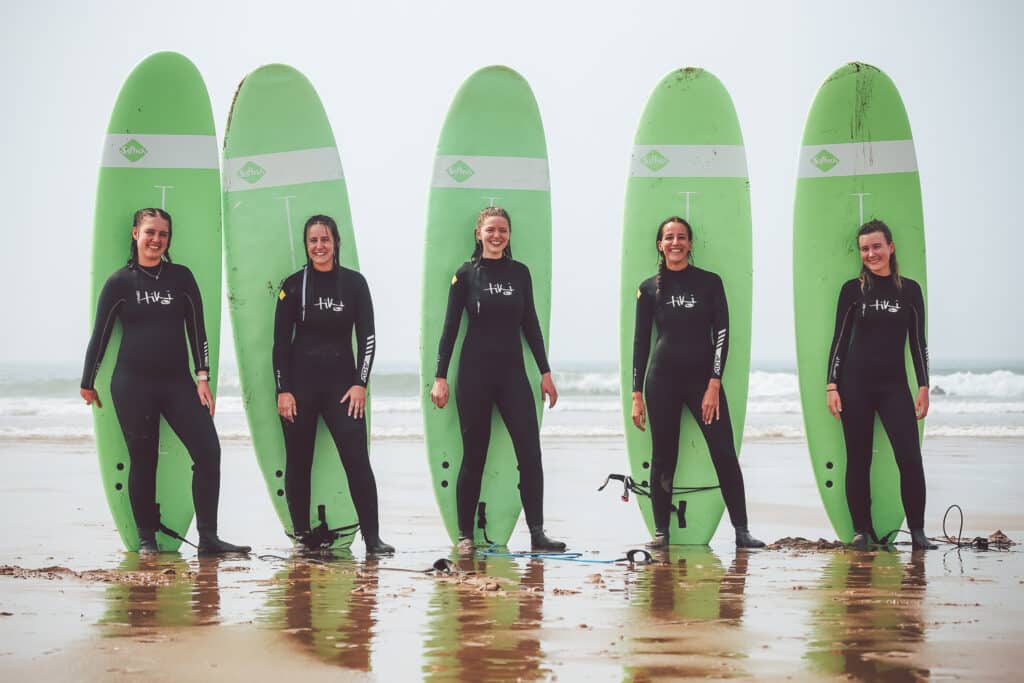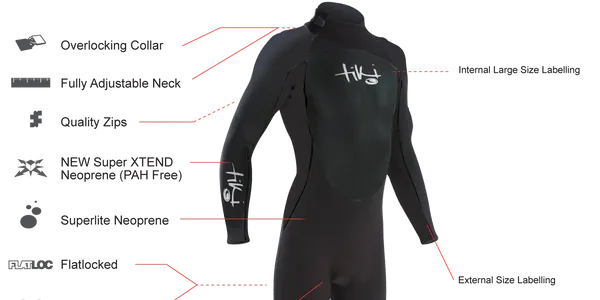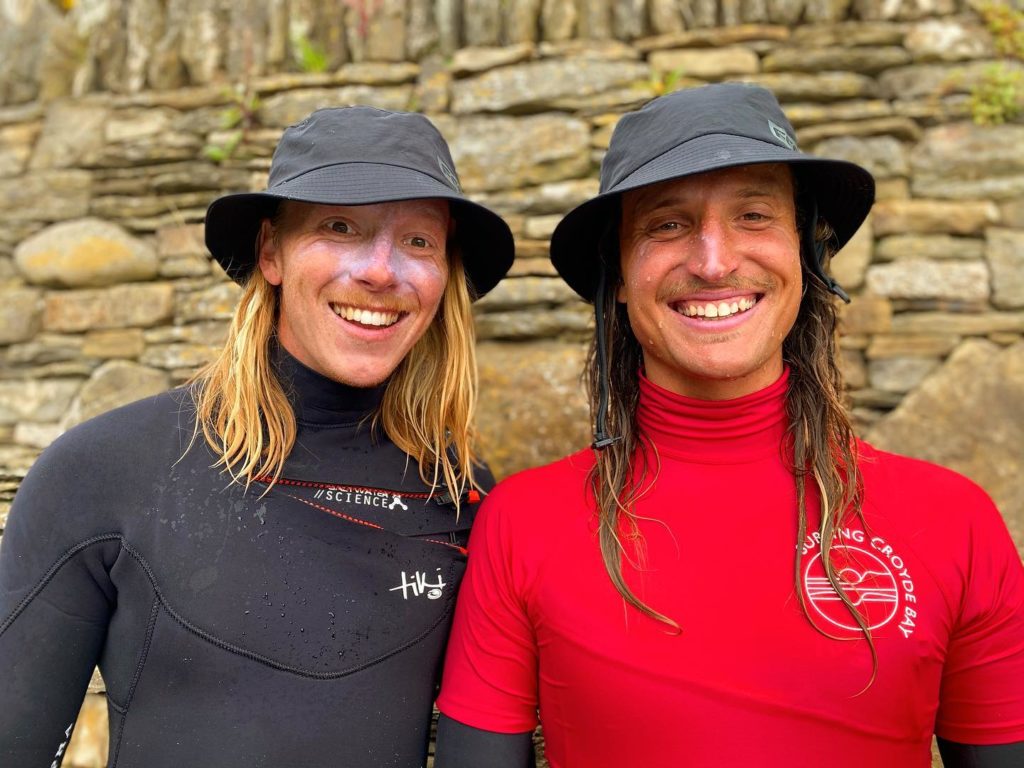Choosing the Right Wetsuit for Surfing

When hitting the waves, choosing the right wetsuit can make or break your surfing experience. The ideal kit will keep you warm, comfortable, and flexible, allowing you to surf longer and perform better. Here’s a guide to help you select the right suit, from thickness to fit, ensuring that you’re prepared for any surfing conditions.

Understanding Wetsuit Thickness
Wetsuits come in various thicknesses, and choosing the right one depends largely on the water temperature. Suit thickness is usually represented by two numbers (e.g., 4/3mm), where the first number refers to the thickness of the neoprene in the torso and the second number refers to the thickness in the arms and legs. Here are some general guidelines:
-
5/4mm Wetsuit – Best for cold water (below 10°C or 50°F). Provides extra warmth and insulation.
-
4/3mm Wetsuit – Ideal for cool water (10°C-15°C or 50°F-59°F). Offers good balance between warmth and flexibility.
-
3/2mm Wetsuit – Great for mild water temperatures (15°C-20°C or 59°F-68°F). Prioritizes flexibility while still providing warmth.
-
2mm or Spring Suit – Suitable for warm water (above 20°C or 68°F). Minimal insulation but maximum mobility.
Key Wetsuit Features to Consider
Modern wetsuits come with features designed to maximize comfort, warmth, and performance. Here are the key features to look for:
-
Seams – Wetsuits typically come with different seam construction methods:
-
Flatlock seams: Best for warmer water as they let in some water but are durable and breathable.
-
Glued and blind-stitched seams: Excellent for cold water. These are sealed and prevent water from entering, keeping you warm.
-
Liquid-sealed seams: Offers the best waterproofing by using a liquid rubber seal over the seams, ideal for cold conditions.
-
-
Zipper Options:
-
Back Zip: Traditional and easier to put on, but can allow more water in.
-
Chest Zip: A bit harder to get into but offers better water resistance and flexibility.
-
No Zip (Zipperless): Offers ultimate flexibility and warmth but can be tricky to wear.
-
-
Neoprene Type: High-performance wetsuits use super stretch neoprene that allows more flexibility, especially around high-movement areas like the shoulders and knees. It’s great for paddling and maneuverability in the water
How to Choose the Right Wetsuit Size
Getting the right fit is just as important as choosing the right thickness. A wetsuit that’s too tight will restrict your movement, while one that’s too loose will let water in, reducing its ability to keep you warm. Here are some tips to find the right size:
Snug but Comfortable: Your wetsuit should fit like a second skin. It should feel snug, but you should still be able to move freely. There should be no large pockets of air or excess material.
Check the Length: The arms and legs should reach your wrists and ankles without being too short or too long. Proper length prevents cold water from entering through gaps.
Neck and Cuffs: Make sure the neck and cuffs fit tightly to prevent water from flushing in but are not so tight that they cause discomfort or chafing.
If you’re in doubt about the right size, consult the brand’s size chart, which typically takes height, chest, and waist measurements into account. Many brands offer specific sizing for men, women, and kids to ensure the best fit.
Caring for Your Wetsuit
A wetsuit is an investment, and proper care will ensure it lasts longer and retains its effectiveness. After each use, rinse it in fresh water to remove salt, sand, or chlorine, and hang it to dry inside out, away from direct sunlight. Avoid using harsh detergents or scrubbing the neoprene, as this can break down the material over time.
Wetsuit Accessories
Along with your wetsuit, you may want to consider additional accessories for colder conditions:
Wetsuit Boots: Keep your feet warm in cold water, especially important if the water is below 15°C (59°F).
Wetsuit Gloves: Ideal for cold weather surfing, they help prevent numb hands during long sessions in chilly water.
Wetsuit Hood: Protects your head and ears in particularly cold waters, and helps reduce heat loss from your head, a key area for maintaining body temperature.
Final Tips for Choosing Your Wetsuit
When choosing your wetsuit, always consider the water temperature, weather conditions, and how long you plan to stay in the water. If you surf in a variety of conditions, you may need more than one wetsuit, like a thicker winter suit and a thinner summer suit.
For those new to surfing or who plan to travel frequently, renting wetsuits or purchasing one with a versatile thickness, such as a 4/3mm, might be the best option. The key is to ensure that your wetsuit is well-fitted, flexible, and appropriate for the water temperature to enjoy the best possible surfing experience
OUR WETSUITS



